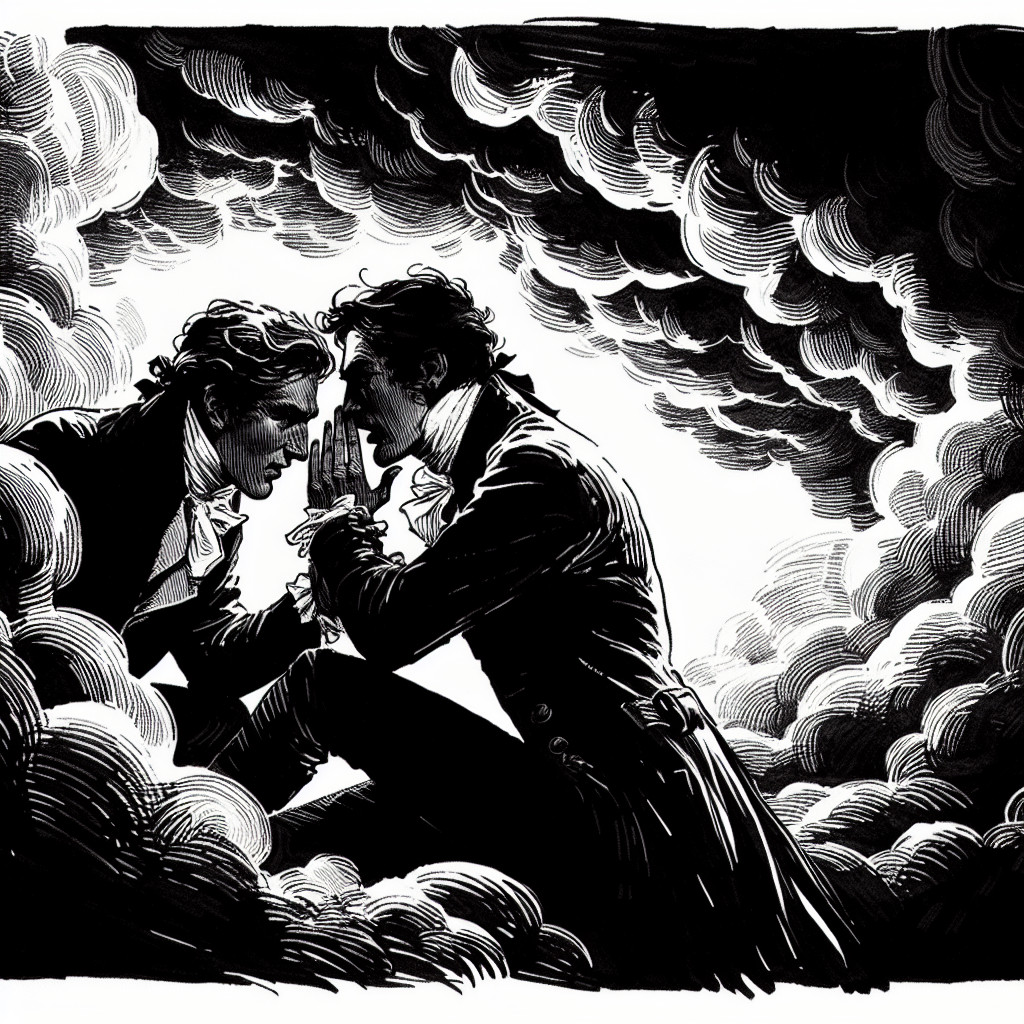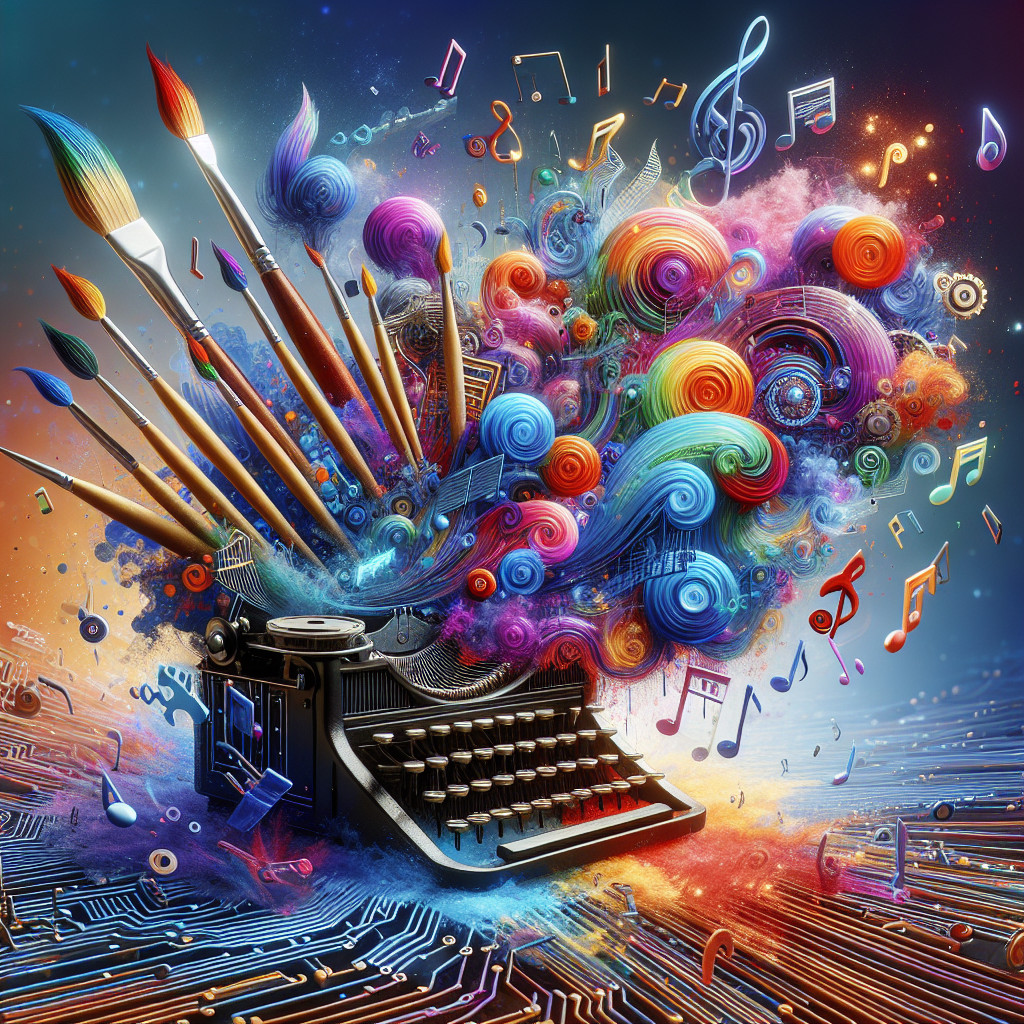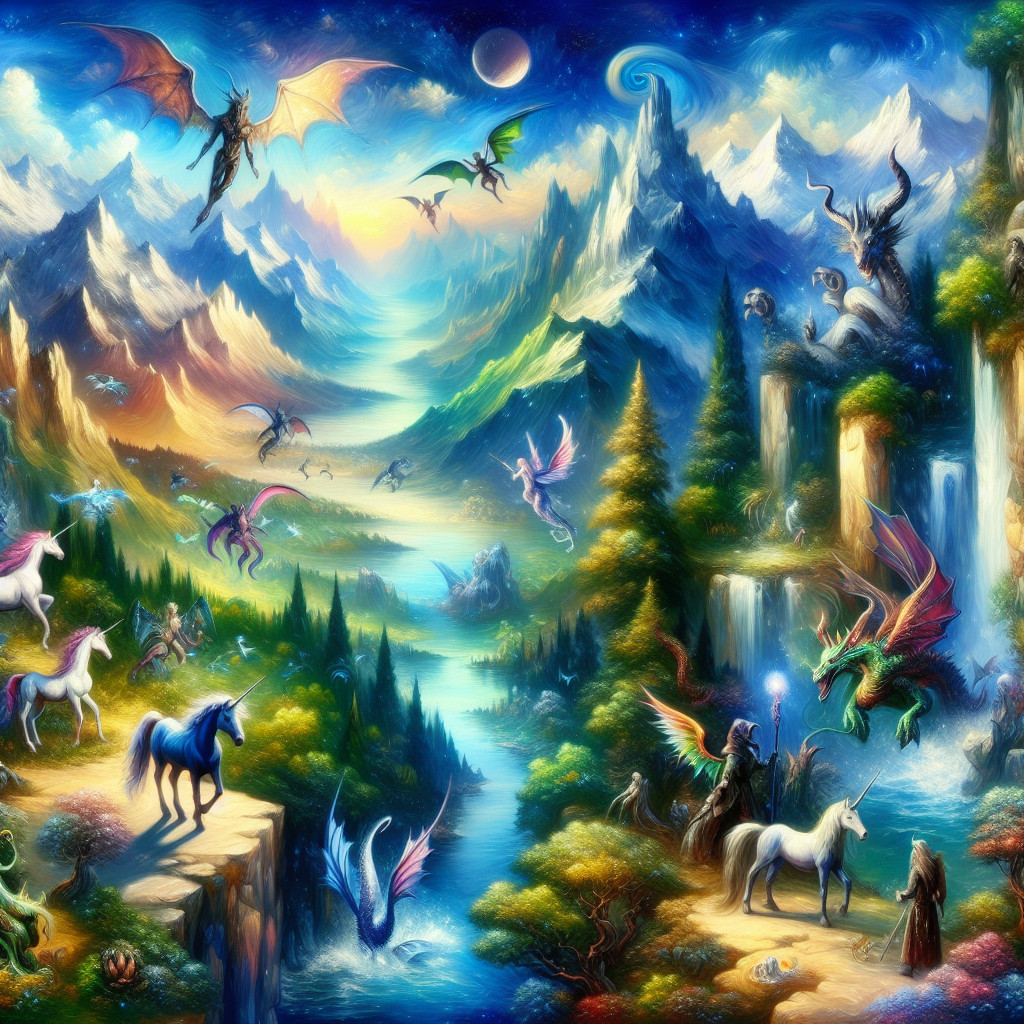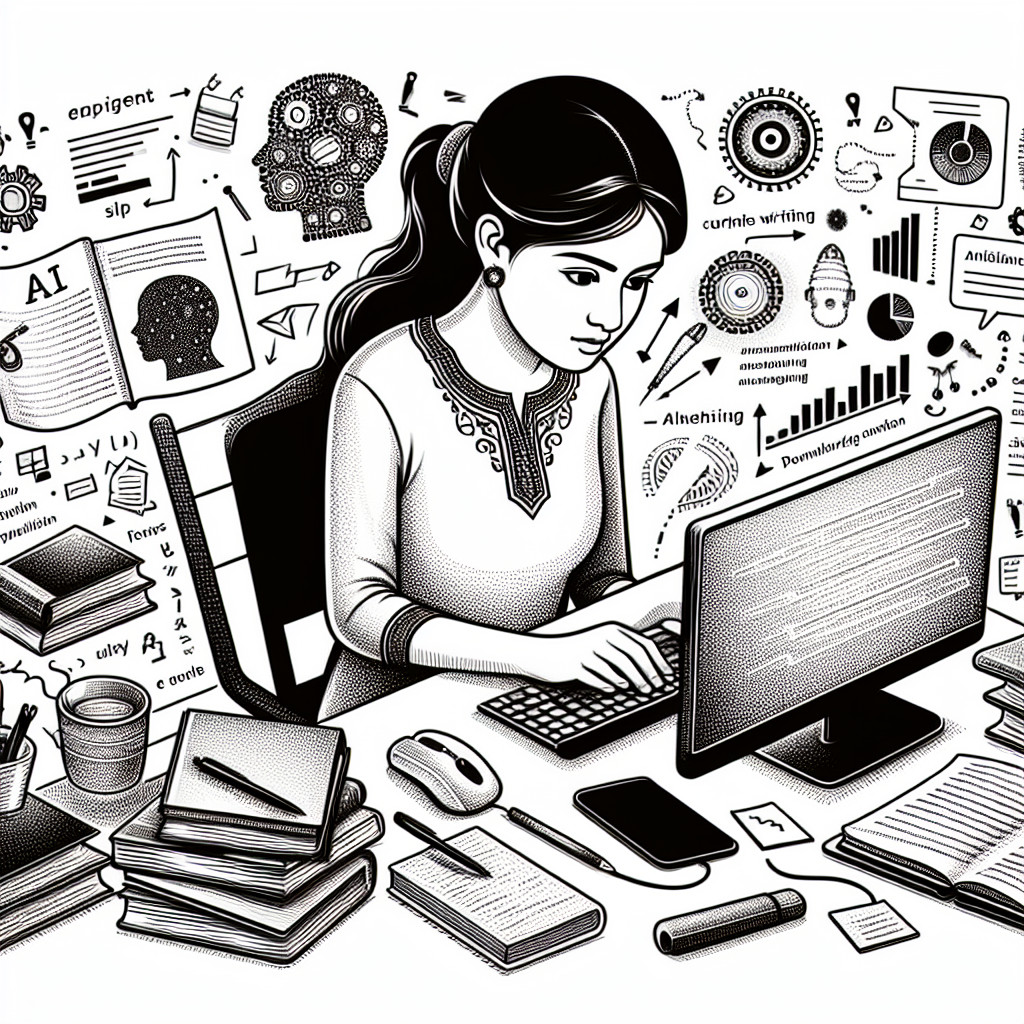Skillfusion have a Fiction GPT story writer that you can try for free, it will automate the process of writing with chatgpt. It uses their 3.5 model and it plans out and writes the whole book for you from your idea. Alternatively you can read this guide on how to write a story using chatgpt.

In the ever-evolving landscape of creative writing, advancements in artificial intelligence have presented new possibilities for innovative storytelling.
One such development is the emergence of ChatGPT, a versatile tool that has already begun to reshape how stories are written. Moreover, it’s also the answer if you’re wondering how to write a story with ChatGPT.
ChatGPT, an abbreviation of ‘Chat Generative Pre-training Transformer’, is an AI language model developed by OpenAI. It’s designed to generate human-like text based on the input it receives. The true beauty of ChatGPT lies in its capacity to construct naturally flowing and coherent narratives, making it a valuable asset in the realm of creative writing.
This powerful tool not only assists writers in generating ideas but can also help to flesh out scenes, create compelling character dialogue, and expand upon storylines according to the writer’s intentions. By providing a prompt or an idea to the AI, it can produce extensive passages of unique text, effectively co-writing your story with you. From ChatGPT novel writing to crafting short stories or even complete books, the possibilities are vast.
The advantages of using ChatGPT for your story writing endeavors are numerous and transformative. First and foremost, it enhances your creativity by offering diverse perspectives and unexpected plot twists. In many ways, it acts like a virtual brainstorming partner that never tires or runs out of fresh ideas.
Another significant benefit comes from its ability to save time. Whether you’re struggling with writer’s block or looking for a way to speed up the writing process without comprising on quality, ChatGPT is there to assist you. Its instant generation of text allows writers to focus more on fine-tuning their narratives, rather than spending countless hours drafting and re-drafting sections of their work.
Additionally, the versatility of ChatGPT is truly remarkable. Regardless of your preferred genre or style, this AI tool can adapt to your instructions, enabling you to write a diverse range of stories. Whether you’re interested in crafting a thrilling mystery, a heartwarming romance, or an epic fantasy adventure, ChatGPT can help bring your vision to life.
But perhaps the greatest advantage of writing a story with ChatGPT is its ability to enhance human creativity rather than replace it. The AI provides a framework upon which writers can construct their narratives, while still leaving ample room for personal creative input. In essence, it acts as a co-author that follows your direction, providing assistance when needed but also allowing you to retain ultimate control over your story.
If this has piqued your interest in using ChatGPT for story writing, you’ll be pleased to know that the actual implementation process is straightforward and user-friendly. But before diving into the specifics, it’s crucial to understand the initial steps and requirements necessary for effectively utilizing this AI tool. These topics along with further elaborations on how to get the most out of ChatGPT will be discussed in detail in the following sections.
There are also many free AI story generators that are powered by the same openai AI’s that can speed up the process.

Initial Steps on How To Write a Story with ChatGPT
The journey of writing a story with ChatGPT begins before you even start interacting with the program. It’s necessary to have a fundamental understanding and clear idea of your story’s trajectory. This includes thinking about the genre, main characters, setting, and basic plotline.
Brainstorming
The first step in this process is brainstorming. You might already have an image or a general concept about your upcoming story. But it’s essential to delve more into it, sketch out your characters, their motivations, and conflict points between them. Consider key events that should occur in the story and how they contribute to the development of these characters.
Synopsis
Once you have a firm grasp of your narrative arc through brainstorming, it’s time to craft your synopsis. A well-defined synopsis provides an overview of the story which can help guide prompt designs when interacting with ChatGPT. The synopsis doesn’t need to capture every detail but should clearly define your protagonist(s), the central conflict they face, and how they overcome their trials.
Creating an Outline
Crafting an outline for your novel or story is another critical component when preparing to use ChatGPT. As accomplished writer J.K Rowling once said, “Planning is essential.” Drawing up an outline helps give structure to your ideas and ensures that you adhere to your narrative arc as you engage in writing a novel using ChatGPT.
Your outline can be comprehensive, mapping each chapter’s key events or scenes, or it can be a skeletal trace of major plot turning points. The level of detail depends on how you prefer to work. However, the more detailed your outline, the more direction you can provide to ChatGPT, resulting in a story that aligns more closely with your initial vision.
Let’s say you’re writing a book with ChatGPT, having an outline lets you use the tool to flesh out each chapter based on the key events you’ve defined. For example, if one of your chapters involves a significant character revelation, providing ChatGPT with this context will help it generate text that supports this critical plot point.
The preparation phase of writing a story in ChatGPT may be time-consuming. However, approaching ChatGPT with clear ideas about your narrative not only enhances the coherency of the AI output but also saves time during revision stages.
Final Considerations Before Launching into Writing
Prior to immersing yourself in creating your story using chatgpt, there are a few final considerations. Review your brainstormed ideas, synopsis and outline thoroughly and keep them handy for easy reference. It is essential to remember that while ChatGPT is an incredibly sophisticated AI model capable of writing impressive prose, it doesn’t inherently understand or know about your story’s concept or characters. Therefore, providing it with these crucial details via prompts can steer its generated outputs more accurately towards what you envision for your story.
With these steps completed and tools prepared, you’re now ready to harness the power of ChatGPT to write your novel or short story. The upcoming sections will guide you through each process – from designing effective prompts to finessing the final details.

The Process of Writing Stories and Novels using ChatGPT
With a clear vision of your story and preliminary tools in hand, you’re now ready to set sail on your writing journey. The core part of writing a story with ChatGPT is understanding how to interact with this AI model to generate the specific content you need. To do this effectively, it’s crucial to learn the art of crafting effective prompts.
Crafting Prompts for ChatGPT
Prompts play a critical role when interacting with ChatGPT; they act as your primary way of communicating your ideas to the AI. A well-designed prompt can help steer the generated output towards your desired narrative direction. This involves presenting the context, characters, and scenario succinctly yet clearly to get optimal results from ChatGPT.
Consider an example where you’re working on a mystery novel using ChatGPT. You’ve reached a point in your story where detective Helen confronts Mr. Black, who she suspects is guilty. An effective prompt for this situation could be:
“Detective Helen had been observing Mr. Black closely and had already gathered enough evidence to confront him. She finds him sitting alone at his usual spot in the deserted café late in the evening. Mustering her courage, she walks up to his table and says,”
This specific cue provides enough context about the scenario and the involved characters which will aid chatgpt in generating a fitting dialogue or scene continuation.
Iterating Prompt Design
You may not strike gold with your first attempt at prompting chatgpt – that’s okay! Don’t be discouraged if initial outputs aren’t perfect or as per expectations. Writing a story with ChatGPT is often an iterative process that requires refining your prompts and rerunning them until you’re satisfied with the results.
Coming back to our mystery novel, suppose the dialogue generated by ChatGPT lacked the intensity required for a heart-stopping confrontation. You can revise your prompt to provide more specific instructions for heightened tension, such as:
“Detective Helen had been silently observing Mr. Black’s every action and she was now ready to confront him. Timing was critical. She found him alone in the shady café he frequently visited late at night. Her heart pounded as she walked towards his table. Leaning in, her eyes met his and a cold whisper escaped her lips,”
This revised prompt amplifies the tension in this scene and provides clear instructions about the tone of dialogue that follows, leading to a more engaging output from chatgpt.
Exploiting Different Genres and Styles
One notable feature of ChatGPT is its ability to adapt to different genres and styles based on provided prompts. Whether you’re writing a short story or creating an epic fantasy saga using chatgpt, it’s important to align your prompts with the genre’s specific writing conventions.
For instance, if you’re working on a science fiction novel set in an alien world, make sure your initial prompts establish this setting clearly. For narrative continuity, ensure that subsequent prompts reinforce this context by adding sci-fi elements like futuristic technologies, extraterrestrial beings, or otherworldly landscapes.
In conclusion, mastery over the delicate art of prompting is fundamental to effectively write a story with ChatGPT. This stage will require patience and practice but fear not! The rewards reaped once you get a hold of it are worth the effort. Up next, we will explore more specific strategies to refine your story further and create engaging content with chatgpt.
How To Enhance your Story and Scenes using ChatGPT
Now that you have a basic understanding of how to interact with ChatGPT, it’s time to delve deeper into strategies that can enhance your story’s quality. Remember, the power of storytelling largely lies in its details – the way characters interact, the vivid descriptions of scenes, the underlying tension in conflicts, these are all aspects that captivate readers’ interest. This section aims to guide you on how to get ChatGPT to write better fiction by enriching your scenes and making them more engaging.
Character Development with ChatGPT
The charm of any story heavily relies on its characters. Well-developed characters help readers connect emotionally with the narrative. When writing a story with ChatGPT, use prompts designed to explore different facets of your characters. For example, delve into their backstory or explore their reactions under various circumstances.
Consider this situation: while writing a novel using chatgpt, you want to establish the fearlessness of your protagonist. A prompt for this purpose could be:
“John had always been a man without fears since his childhood. One striking event from his past that demonstrated his fearlessness was when…”
This instructs chatgpt specifically about John’s character trait and allows the AI to generate an interesting backstory highlighting his fearlessness.
Immersive World-Building
Effective world-building has the power to transport readers directly into the heart of your narrative, making it an essential element for genres like fantasy, sci-fi, and historical fiction. When writing a book with ChatGPT, provide enough details about the world where the story resides in your prompts. The AI is capable of generating intricate descriptions to craft a vivid mental picture for your readers.
For instance, while writing an epic fantasy saga set in an imaginary kingdom, your prompt could be:
“The kingdom of Eldoria, nestled between towering mountains and dark enchanted forests, was known far and wide for its majestic castle that shone under the eternal sun. Describing the grandeur of Eldoria’s castle would mean …”
This not only provides chatgpt with contextual elements like genre and setting but also enables the AI to produce beautifully descriptive passages.
Creating Tension & Conflict
Tension and conflict are vital ingredients of any engaging story. With ChatGPT, you can utilize prompts structured towards creating conflicts between characters, or escalating tension in critical situations. By providing clear instructions about these plot elements in your prompts, you can generate narratives filled with suspense and intrigue.
Generating Dialogue
Dialogue is another important component that can bring life to your characters. ChatGPT excels at producing natural-sounding dialogues when given clear directives. Make full use of this feature by drafting prompts that initiate dialogue sequences among your characters.
In conclusion, using ChatGPT for story writing goes beyond merely crafting effective prompts. It involves playing around with different strategies to add depth to your stories, making them more immersive and exciting for the readers.

Tips on How To Write Better Fiction with ChatGPT
So far, we’ve introduced you to the basic mechanics of writing a story with ChatGPT. You’ve learned how to prepare before writing, how to craft effective prompts, and how to use ChatGPT’s capabilities to enhance your stories. But mastering a tool involves more than just understanding its features, it also requires knowing how to troubleshoot common problems and improve overall results.
Addressing Time Lapses in Narrative
One common difficulty faced when writing a novel using ChatGPT is managing time lapses within the narrative. Since the AI doesn’t track real-world time progression, it might create inconsistencies in the story’s timeline. One way around this is by explicitly mentioning time-related details in your prompts whenever time progresses significantly in your story.
“Three months had passed since John last heard from Matt. Following his sudden disappearance, John decided to pay a visit to Matt’s old apartment,”
Providing Clear Plot Guidelines: Avoid Convoluted Stories
While ChatGPT can generate quite detailed and complex narratives based on the provided information, it could lead towards a convoluted plot if not carefully managed. To avoid this, make sure that your prompt clearly states what plotline or subplot you wish to develop at every major turning point of your story. Specify which characters are involved and how the event affects them or changes their circumstances.
Maintaining Consistent Character Voices
Inconsistent character voices can distort reader’s perception and disconnect them from the narrative. When writing a book with ChatGPT, provide clear instructions about each character’s distinct speech pattern or personality traits especially while initiating dialogues to maintain consistency.
“Elder Wren, known for his old-fashioned and formal language, came forward to address the crowd.”
Handling Unexpected Outputs
Sometimes, ChatGPT’s output may diverge from your envisioned trajectory of the story. In such cases, don’t despair. Rather than trying to force-fit the output content into your narrative, consider revising your prompt or using the ‘Undo’ option to retry the text generation.
Patience & Open-mindedness: Aids in Creativity
Remember that working with an AI co-writer like ChatGPT is a creative process. It’s essential to approach it with a certain degree of patience as well as open-mindedness. You might have to try multiple prompts before accomplishing your desired outcome. However, these iterations can lead to serendipity – a surprise element or a plot twist you hadn’t considered which can enrich your story!

To summarize, writing better fiction with ChatGPT involves not only understanding how it works but also implementing practical solutions that tackle common problems and improve results. As you continue to experiment and gain experience, you will find ways to optimize this tool’s capabilities to write engaging and novel stories.